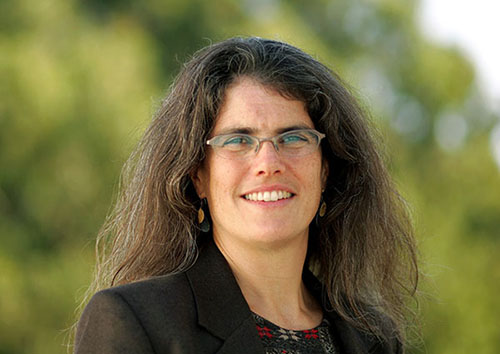The Monster at the Heart of the Milky Way
Does a Supermassive Black Hole Lurk at the Center of Our Galaxy?
When: Thursday, October 20th 2016, 4:30 pm - 5:30 pm
Where: ARMS 1010
Speaker: Professor Andrea Ghez, University of California, Los Angeles. Visit Website

Abstract:
Learn about new developments in the study of black holes. Through the capture and analysis of twenty years of high-resolution imaging, Dr. Ghez and her team have moved the case for a supermassive black hole at the center of our galaxy from a possibility to a certainty. This was made possible with the first measurements of stellar orbits around a galactic nucleus. Further advances in state-of-the-art of high-resolution imaging technology on the world’s largest telescopes have greatly expanded the power of using stellar orbits to study black holes. Recent observations have revealed an environment around the black hole that is quite unexpected (young stars where there should be none; a lack of old stars where there should be many; and a puzzling new class of objects). Continued measurements of the motions of stars have solved many of the puzzles posed by these perplexing populations of stars and unveiled new unexpected observations. Future measurements of stellar orbits at the Galactic Center hold the promise of improving our understanding of gravity through tests of Einstein Theory of General Relativity in an unexplored regime and providing insight into how black holes grow and the role that they play in regulating the growth of their host galaxies.
Bio:
Andrea M. Ghez, professor of Physics & Astronomy and Lauren B. Leichtman & Arthur E. Levine chair in Astrophysics, is one of the world’s leading experts in observational astrophysics and heads UCLA’s Galactic Center Group. Best known for her ground-backing work on the center of our Galaxy, which has led to the best evidence to date for the existence of supermassive black holes, she has received numerous honors and awards including theCrafoord Prize in Astronomy from the Royal Swedish Academy of Science (she is the first woman to receive a Crafoord prize in any field), Bakerian Medal from the Royal Society of London, a MacArthur Fellowship, election to the National Academy of Sciences,the American Academy of Arts & Sciences, and the American Philosophical Society.
Her work on the orbits of stars at the center of the Milky Way has opened a new approach to studying black holes and her group is currently focused on using this approach to understand the physics of gravity near a black hole and the role that black holes plays in the formation and evolution of galaxies.
Advances in high resolution imaging technology enabled Ghez’s work and her group continues to work on pushing the frontiers of these technologies forward. She serves on several leadership committees for the W. M. Keck Observatory, which hosts the largest telescopes in the world, and the future Thirty Meter Telescope.
Ghez is also very committed to the communication of science to the general public and inspiring young girls into science. Her work can be found in many public outlets including TED, NOVA’s Monster of the Milky Way, Discovery’sSwallowed by a Black Hole, TED, and Griffith Observatory.
Ghez earned her B.S from MIT in 1987, and her PhD from Caltech in 1992 and has been on the faculty at UCLA since 1994. For more information see http://www.galacticcenter.astro.ucla.edu and http://www.astro.ucla.edu/~ghez.
- Events and Seminars
- Astrophysics Seminars
- Biophysical Seminars
- Condensed Matter Seminars
- Nuclear Physics Seminars
- Physics Education Research Seminars
- Events and Seminars Archives
- General Colloquia
- Hubert M. James Lectures
- Particle Physics
- Candidate Seminars
- Atomic, Molecular, Optical Seminars
- Travel Information